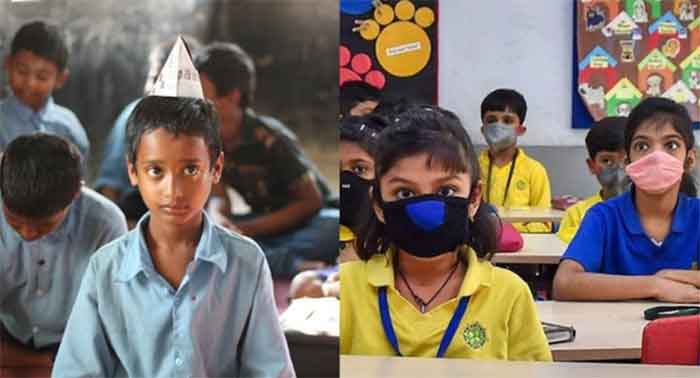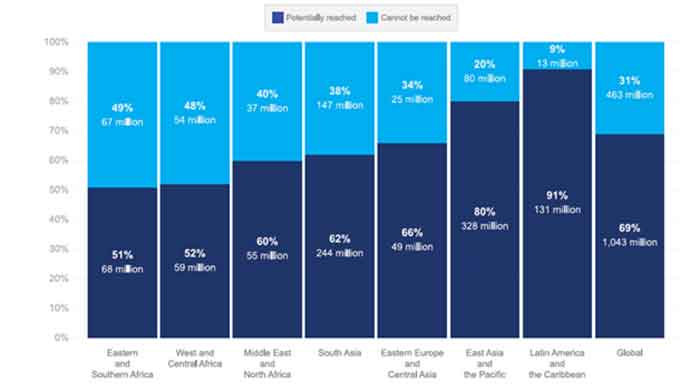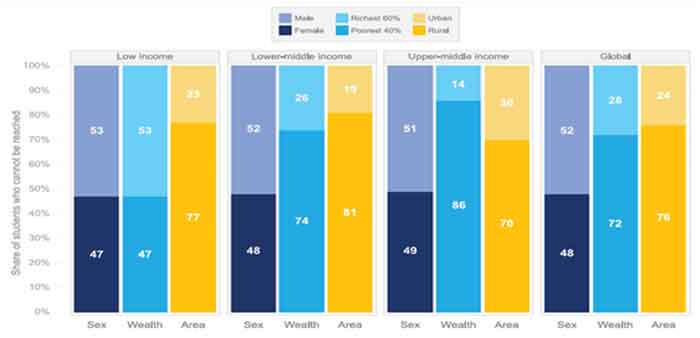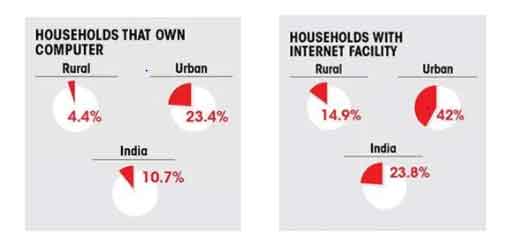
Amidst the Covid-19 pandemic, while getting acquainted with new digital modes of learning, it suddenly struck me hard on listening to the plight of a 15-year-old girl, living in a semi-urban area of India and struggling to learn from Zoom classes on the single smartphone of the family being shared between her and four siblings. Plights of children belonging to marginalized sections of the society dropping out of their schools are common nowadays. Covid-19 pandemic has done something or not but has certainly unveiled the lack of preparedness for adopting digital learning across the globe.
Global Scenario of the Digital Divide
Globally, approximately 31% of students (463 Mn) from pre-primary to upper secondary levels of schooling could not be reached out either due to unavailability of infrastructure/equipment to receive the broadcasted learnings or due to lack of robust policies supporting digital learning. The digital gap intensifies according to the developmental and economical status of the region. More than 45% of students in Africa could not be reached digitally while parts of Asia had nearly a 40% gap in the accessibility of digital learning.

Region-wise inaccessibility to remote learning globally
By magnifying our scope of analysis, we could easily see that the problem of inaccessibility of digital learning is much more with specific segments of the society. Globally, more than 70% of the students unable to access digital learning solutions in the Covid-19 pandemic were either from rural areas or from economically weaker sections of the society.

Students from vulnerable sections have been impacted the most globally
Disparate access to Digital facilities in India
Out of 463 Mn students unable to access remote learning globally, 147 Mn students are from South Asia. India has not been an exception too. More than 320 Mn students and 1.5 Mn schools registered in India saw a transition from offline learning to remote learning. Crores of students in India have been impacted by the inaccessibility of remote learning.
As seen globally, in India also there are few segments of the society being impacted much more than the others. While talking about the availability of the required infrastructure to access the digital instructions, stark differences could be observed between rural and urban regions of India. As per the survey conducted by the NSO just 4% of rural households had access to computers, compared with 23% of urban households. And, just 15% of rural households had internet access as compared to 42% of urban households. Such disparities are not limited to the rural and urban areas but extend to the developed and undeveloped states. Economical welfare of any household determines the access to digital equipment too, thus needless to say that these disparities are extended as per the economical sections of the society.

Lack of digital facilities across rural & urban regions of India
Lack of know-how to use digital facilities across rural India
Lack of digital infrastructure is not the only problem, lack of familiarity with the usage of digital equipment raises one more. Again, the stark differences regarding the digital solutions’ usage familiarity amongst rural and urban areas could not be ignored. Only 9.9% of the population could operate computers in rural areas while 32.4% of the population could operate computers in urban areas. Similar trends are observed in internet usage compatibility. Only 13% of the rural population knows how to use the internet while 37.1% of the urban population is comfortable with using the internet. Lack of familiarity with the usage of digital solutions ultimately leads to less digitally experienced teachers in rural areas when compared to urban areas. Also, students in rural areas are not able to receive guidance from their parents or guardians to use digital facilities.
Private Educational Institutions in India are adapting faster
In India, it has been also observed that private institutions have shown much faster adaptability to the shift in learning style from offline to remote. Apart from IITs & IIMs, Governmental institutions are struggling to adapt to the digital learning era. Also, teachers in private institutions showed faster adaptability to the digital learning system than the teachers in the Governmental institutions. This lack of adaptability shown by Governmental schools and colleges pushes the marginalized students to the new margins.
Impact of Digital Divide on young learners
The lack of accessibility to the current digital learning environment is just not a year wasted but it hints out towards the greater issue. In the world of the digital age, universal and uniform accessibility to digital facilities is of paramount importance. Lack of access to digital facilities pushes the population to the world of disparities and financial distress.
Lack of access to the learning might also push the students to the labor market as deprived students would have spare time to utilize in the cash crunch caused to the marginalized households due to the current pandemic. This increases the chances of children being pushed to the labor market
Uneven distribution of the digital facilities across the country is alarming as this is like ensuring another cycle of financial disparities for the already marginalized sections of the society. Not having access to the digital facilities means that the future generations of the deprived ones have been once again pushed one step behind the fortunate ones.
Short Term & Long-Term fixes to the issue of the Digital Divide in India
Digital learning could be of great use once there is a level playing field across the country. There could be short-term as well as long-term fixes to the issue of the digital divide in India. Short term fixes to the solutions include the increasing reliance on digital facilities such as TV, radio for learning. This would ensure greater accessibility in the deprived sections of the society due to more familiarity with these devices across the country. Such an initiative has been taken by the Ministry of Education of Peru. Other short-term fixes include the usage of digital solutions allowing offline access (Google Suite), distribution of hard copies of the learning materials.
In the long term, it is important to achieve the democratization of access to digital solutions. The Government should focus on providing the required digital facilities to every region of India. To launch BharatNet – to lay down optical fibers across India by 2022 is a welcome step but the Government must ensure last-mile accessibility within the decided timeframe. The Government should also look towards providing financial support to the vulnerable sections of society for buying smartphones, computers. Not only the Government should come forward, but private players should also play a constructive role. Few private players such as Vodafone have come forward to provide financial support to the vulnerable sections of the society for the purchase of digital equipment. With the advent of Jio in India, data/connectivity charges have dipped a lot but private players should consistently focus on providing quality services to these remote areas at affordable prices in the future. Digital learning platforms should also come up with offerings to enhance the inclusion of vulnerable students in the digital learning saga.
Since Covid-19 has already unveiled the digital divide in India, future policy focus should be to bridge the gap rather than ignoring the underlying issue, or else all the claims about India leading the digital inclusion would be big lies.
Dhruv Pachauri is a PGP 2 student at IIM Ahmedabad
References:
SIGN UP FOR COUNTERCURRENTS DAILY NEWSLETTER
 RSS Feed
RSS Feed















 December 13th, 2020
December 13th, 2020  Awake Goy
Awake Goy  Posted in
Posted in  Tags:
Tags: 













